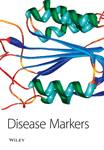Multi-Resolution and Wavelet Representations for Identifying Signatures of Disease
Abstract
Identifying physiological and anatomical signatures of disease in signals and images is one of the fundamental challenges in biomedical engineering. The challenge is most apparent given that such signatures must be identified in spite of tremendous inter and intra-subject variability and noise. Crucial for uncovering these signatures has been the development of methods that exploit general statistical properties of natural signals. The signal processing and applied mathematics communities have developed, in recent years, signal representations which take advantage of Gabor-type and wavelet-type functions that localize signal energy in a joint time-frequency and/or space-frequency domain. These techniques can be expressed as multi-resolution transformations, of which perhaps the best known is the wavelet transform. In this paper we review wavelets, and other related multi-resolution transforms, within the context of identifying signatures for disease. These transforms construct a general representation of signals which can be used in detection, diagnosis and treatment monitoring. We present several examples where these transforms are applied to biomedical signal and imaging processing. These include computer-aided diagnosis in mammography, real-time mosaicking of ophthalmic slit-lamp imagery, characterization of heart disease via ultrasound, predicting epileptic seizures and signature analysis of the electroencephalogram, and reconstruction of positron emission tomography data.




